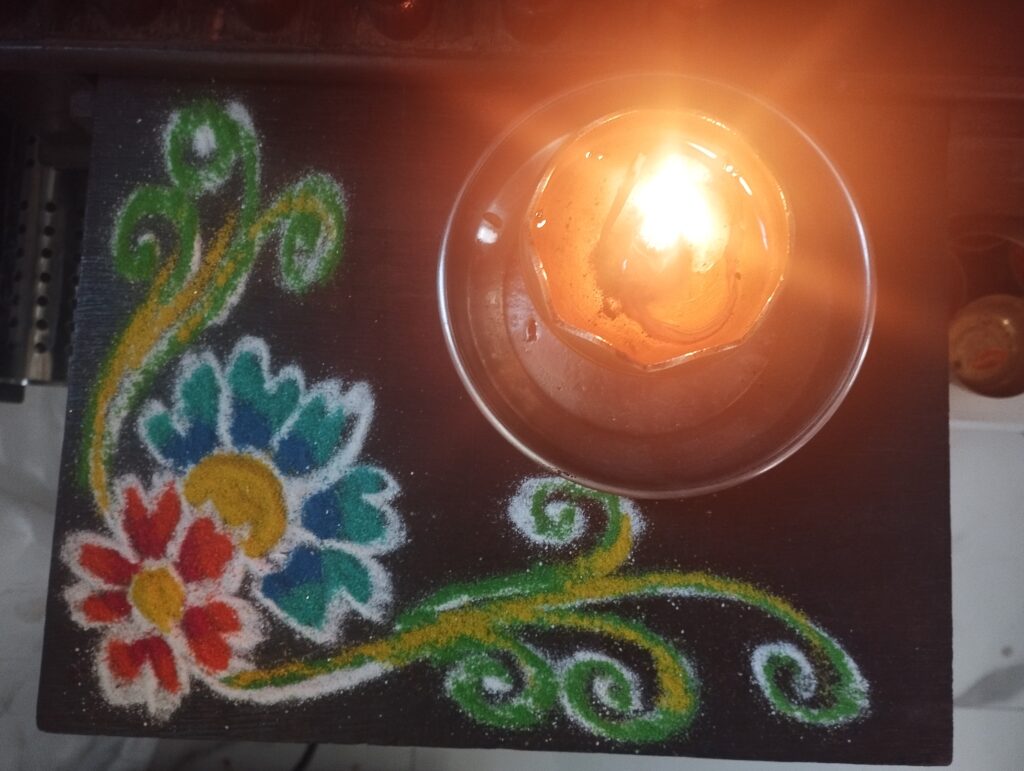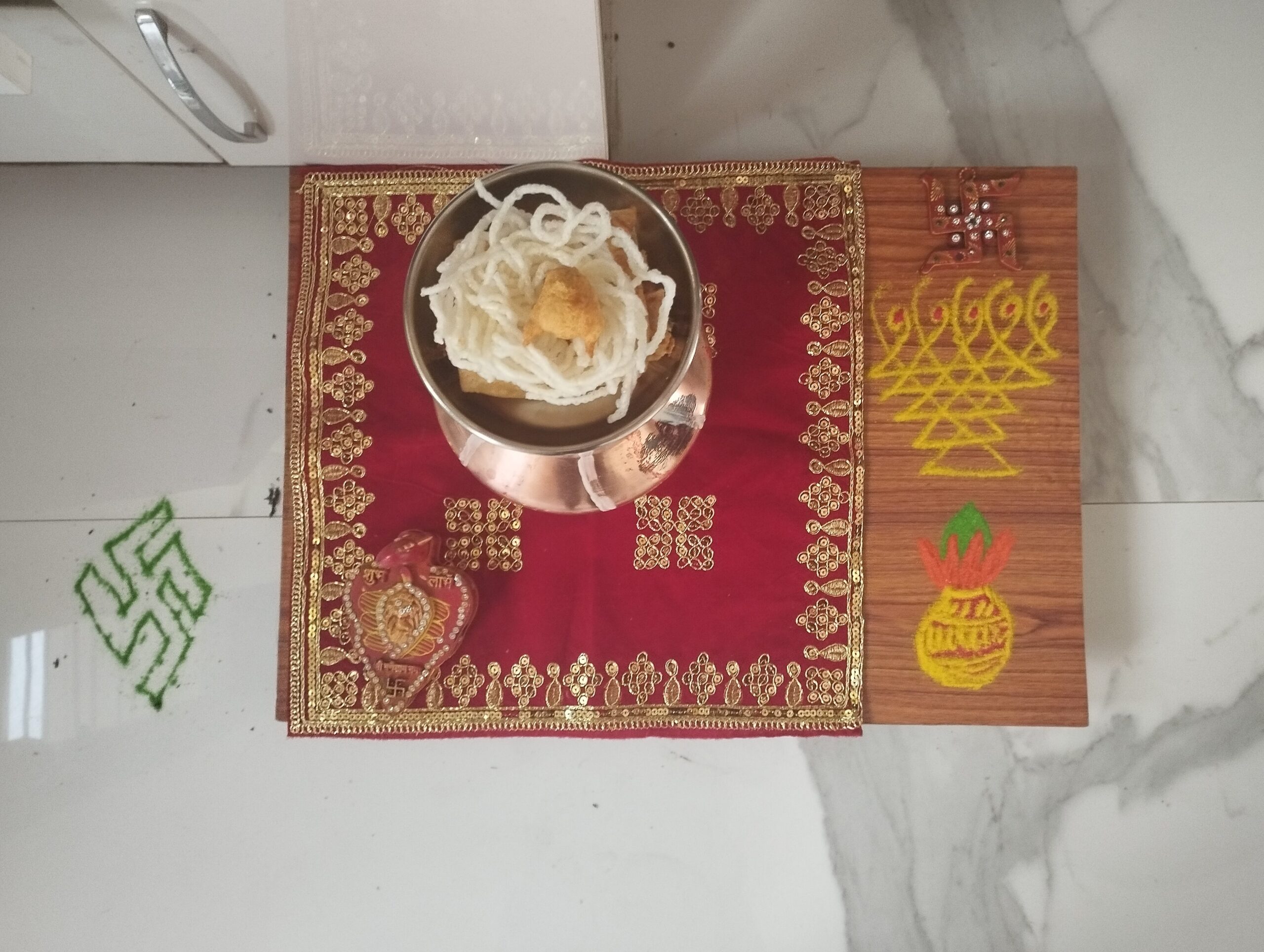Rangoli in front of Home Temple


Rangoli, an ancient art form originating in India, has been an integral part of Indian culture for centuries. It involves the creation of intricate and colorful patterns on the ground using colored rice, flour, sand, or flower petals. These beautiful designs are often seen adorning the entrances of homes, especially in front of the home temple, adding a touch of elegance, auspiciousness, and spiritual significance to the surroundings.
Significance of Rangoli:
Rangoli holds a deep cultural and religious significance in India. It is believed to be a symbolic representation of welcoming prosperity, good luck, and positive energy into the house. The art form is traditionally passed down from generation to generation, with each design carrying a unique meaning and purpose.
Rangoli in Front of Home Temples:
The home temple, known as the “puja room” or “mandir,” is considered a sacred space where families gather to offer prayers and seek blessings. Placing a rangoli design in front of the home temple holds great importance. It is believed to invite the divine presence and create a serene ambiance that aids in concentration and meditation.
Symbolism and Designs:
Rangoli designs in front of home temples often incorporate sacred symbols and motifs. The lotus flower, an emblem of purity and enlightenment, is a popular choice. Peacock feathers, representing beauty and grace, are another common motif. Other designs may feature deities, religious scriptures, or intricate geometric patterns, each carrying its own spiritual significance.
The Process of Creating Rangoli:
Creating a rangoli in front of the home temple requires creativity and skill. The artist carefully selects the design and materials, considering the overall theme, color palette, and space available. The rangoli is typically made by drawing an outline using chalk or colored powder, and then filling it with vibrant hues using various tools like spoons, fingers, or cones.
Maintenance and Rituals:
Rangoli designs are temporary artworks, often created afresh every day. They require regular maintenance, with the old design being erased before the new one is created. This process symbolizes the impermanence of life and the constant cycle of creation and destruction. Additionally, many families perform rituals like lighting oil lamps or incense sticks around the rangoli, further enhancing its spiritual aura.
Rangoli designs in front of home temples serve as a visual expression of devotion, tradition, and spirituality. They not only add aesthetic charm to the house but also create an inviting and sacred environment for prayers and rituals. With their vibrant colors and intricate patterns, these rangoli designs offer a unique blend of artistry and faith, making them an integral part of Indian culture and a cherished tradition passed down through generations.




